As we came out of the Part-Dieu train station in late afternoon to find the Metro, we (especially Ian) knew right away that Lyon is too big a city for our tastes. We had chosen Lyon, with a population of a half million, as our last stop in France for the month of June mainly because of a direct, inexpensive flight to Cluj-Napoca, Romania. As we were planning to return to Romania for an extended stay in Brasov, this flight allowed us to bypass Bucharest.
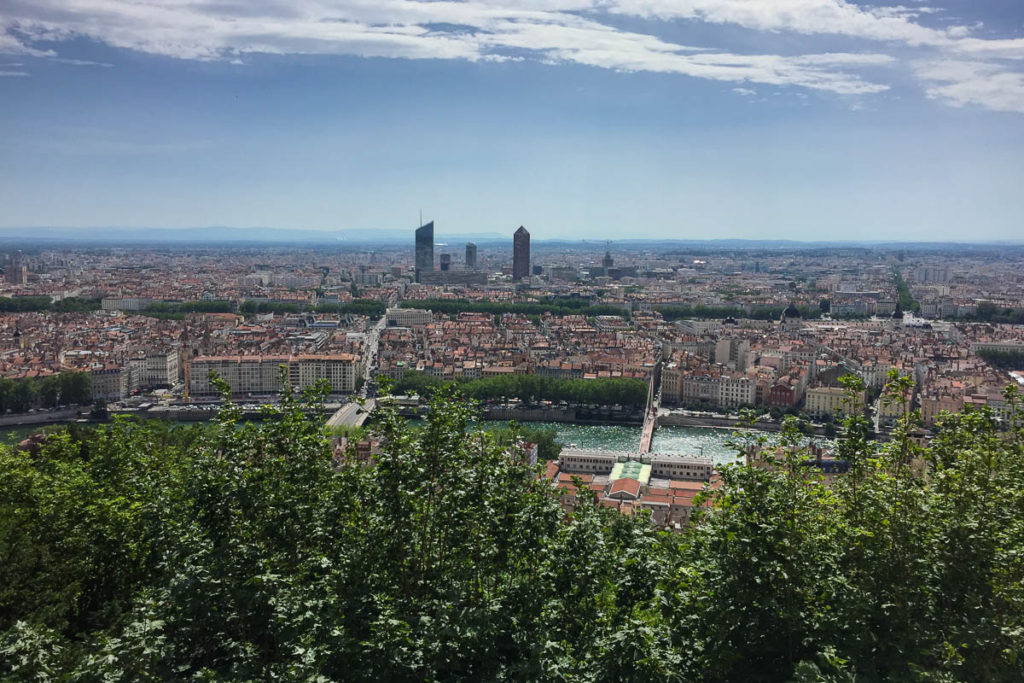
Furthermore, a little research told us that Lyon, the capital of France’s Auvergne–Rhône–Alpes region, is also considered a gastronomic capital. Although we’re not foodies, we do like food. As it turns out, we ended up not eating out that much, as is often the case. But when we did, the food was delicious!
Villeurbanne, a Suburb of Lyon
Our very nice Airbnb was in a suburb of Lyon. From our charming, homey apartment in Villeurbanne, it took us about 20 minutes, including walking and Metro, to get into the heart of Lyon. The metropolitan area has an excellent mass transit system, including Metro (tube), bus, and tram. We even went from our apartment to the airport very early in the morning using this system.
How We Spent Our Time in Lyon
Unfortunately, we hit Lyon in the midst of western Europe’s first major heat wave of the summer. Despite the heat, we managed to do quite a bit. As the hottest point of the day was between 3 and 5 pm, we tried to go out early in day. We broke up our activities, doing a little each day
Fourvière Hill
On our first full day in Lyon, we took the funicular up to Fourvière Hill. Here the attractions are the impressive Basilica of Notre–Dame de Fourvière, views over the city, and not one, but two Roman theaters.

Before this trip, we hadn’t realized how many French cities have Notre-Dame cathedrals, e.g., Dijon and Strasbourg, and of course, Paris. And there are several others. After all, Notre-Dame literally means “Our Lady”, referring to the Blessed Virgin Mary.
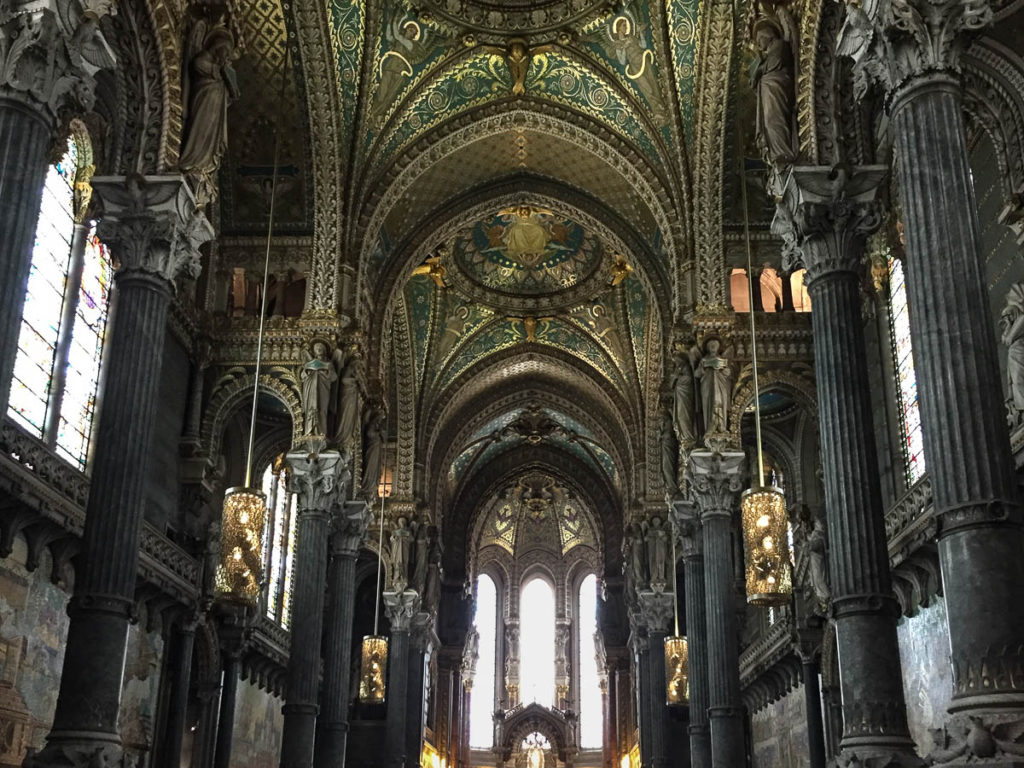
The two Roman theaters are in surprisingly good shape. At least the larger one is still used today for concerts, seating 3000, compared to 10,000 in Roman times.
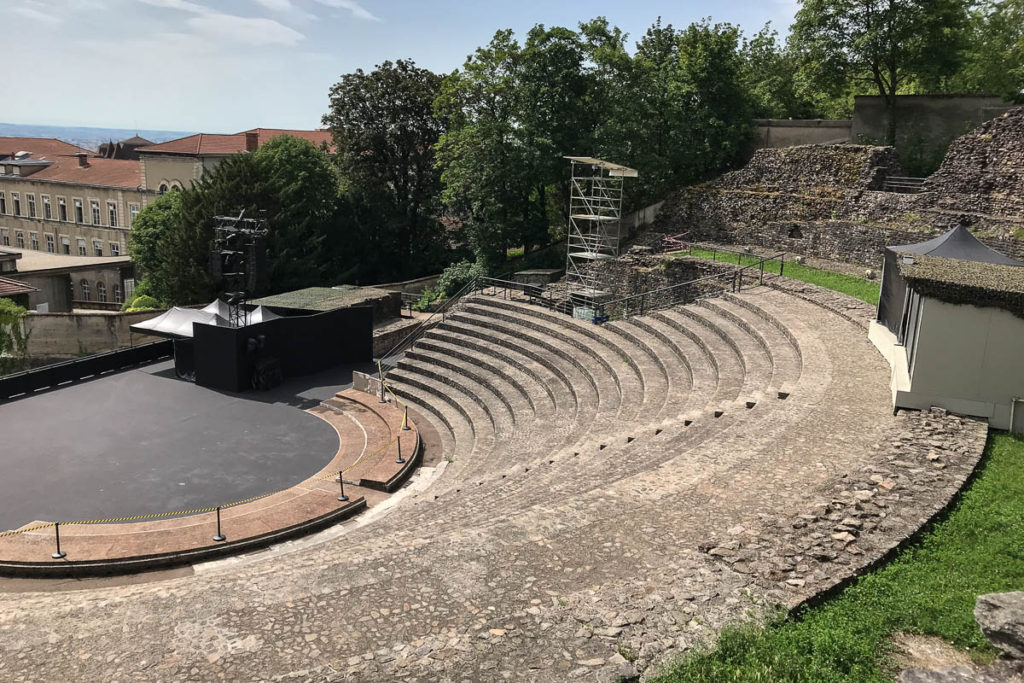
We walked back down to the lower town through some lovely wooded paths and gardens.
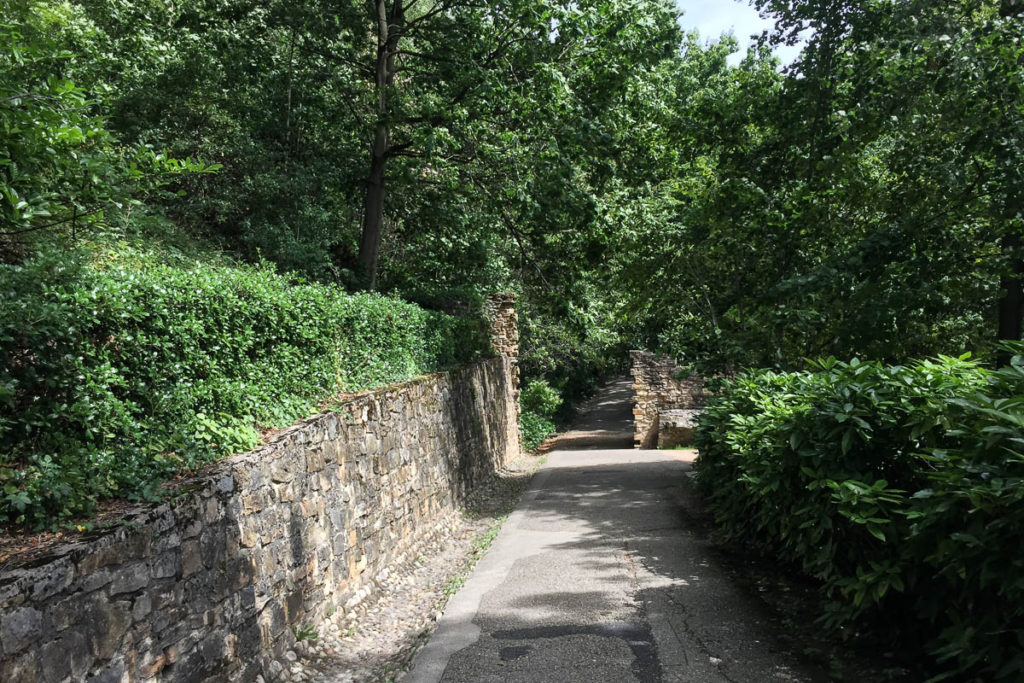
Vieux Lyon
Since wandering is one of our favorite pastimes, we couldn’t miss the opportunity to wander through Vieux (old) Lyon. Cobblestone pedestrian streets, well-preserved Renaissance buildings, lots of restaurants and bouchons. A bouchon is a restaurant serving traditional Lyonnaise food. Originally small, family-owned (some still are) operations serving mainly meat such as roast pork, sausages, or duck pâté. These days, most bouchons have expanded their offerings. Also, lots of tourists, as European river cruises stop here, but not so many that it detracted from the charm of this area.

While here, we also visited Lyon Cathedral, aka Saint Jean Cathedral. Dedicated to Saint John the Baptist, it is the seat of the Archbishop of Lyon.
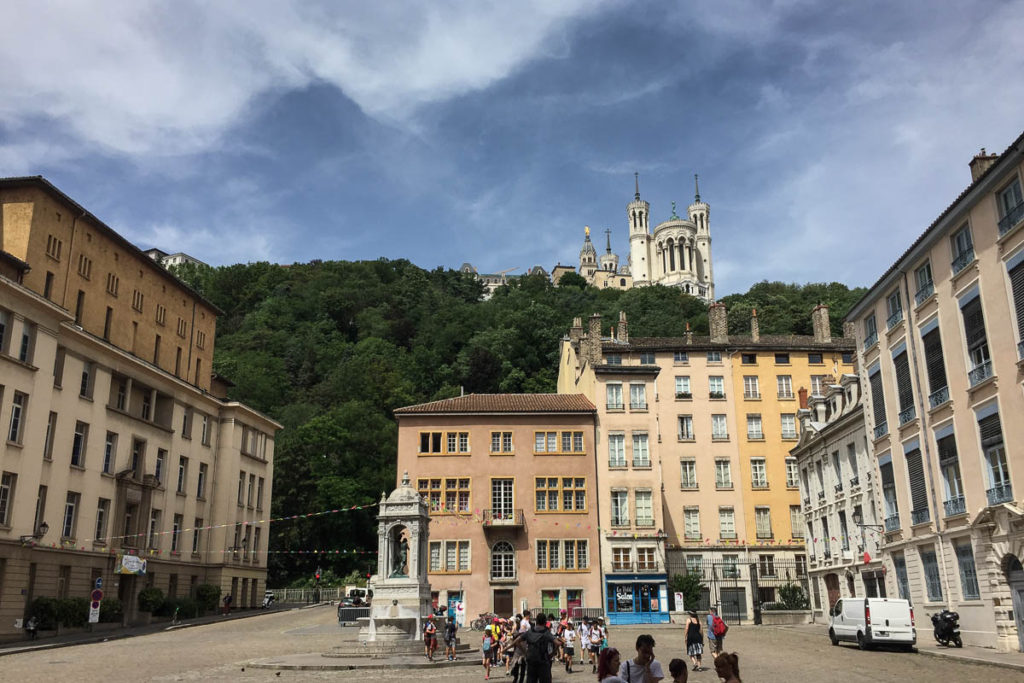
Unfortunately, it was not until after our time spent in Vieux Lyon that we read about traboules. These winding passageways with fine homes and courtyards linked the streets in the old city. They provided sheltered shortcuts for moving unfinished silk goods from one stage of production to another. Lyon was the center of silk production in Europe during the 16th to 19th centuries. Apparently, we missed these as you need to know where to look for the heavy doors that lead to these traboules as well as how to open the doors. Since they were hard to find and not appearing on maps, these traboules were also used by the French Resistance during World War II.
Presqu’ile
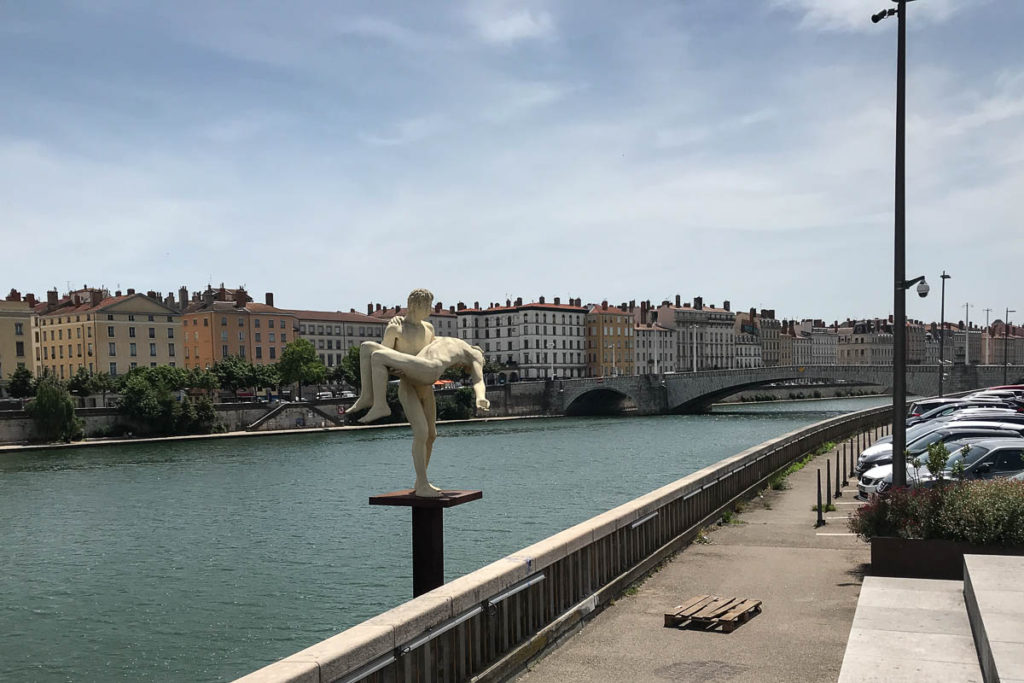
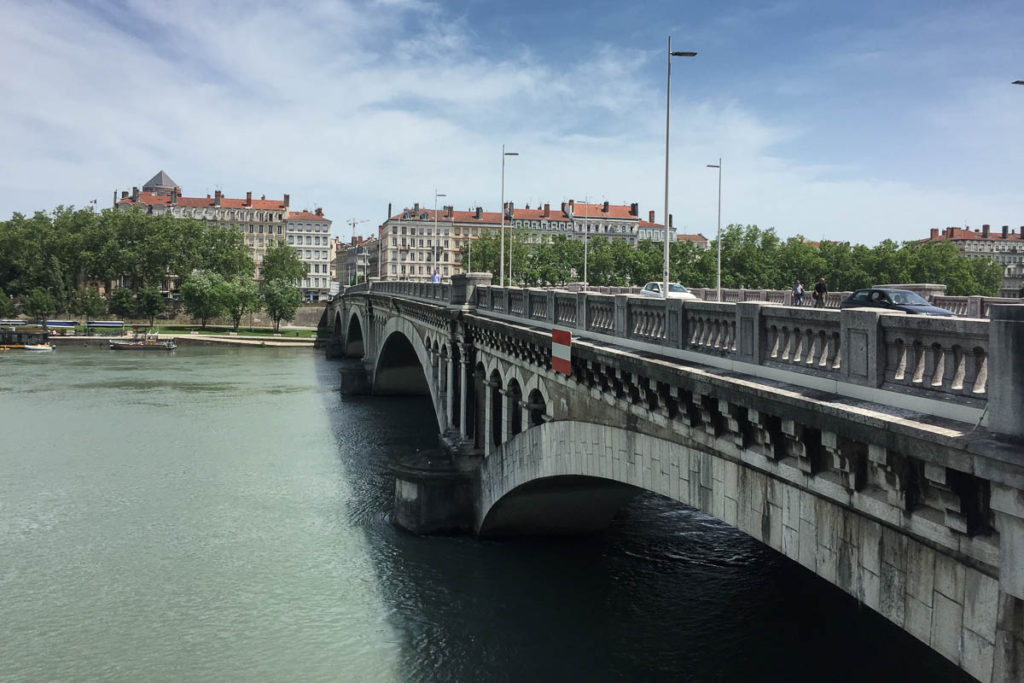
Two rivers, the Rhône and the Saône, run through the heart of Lyon. They converge at the southern end of the historic center and form a peninsula, Presqu’ile (literal translation is “almost an island”). The modern, urban renewal Confluence neighborhood sits at southern tip of the peninsula and the Croix-Rousse neighborhood is at the northern end.
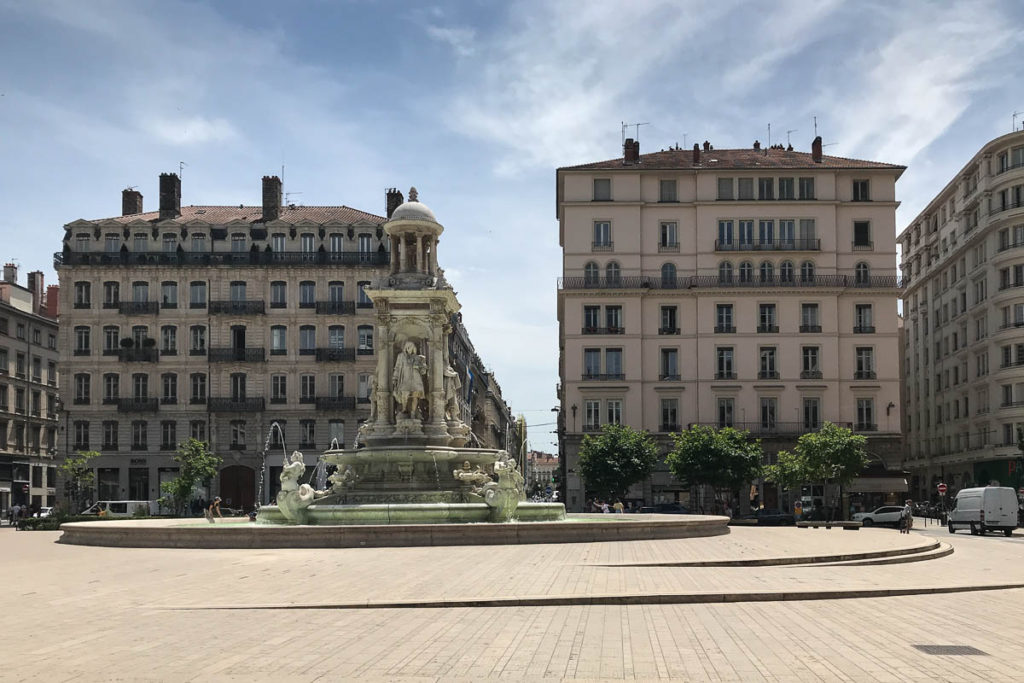
While on Presqu’ile, we walked along Lyon’s major shopping street, Rue de la République. We also walked through Passage de l’Argue, a covered shopping passage dating from the 1800’s. No, we didn’t shop…but we did eat. More on that later.
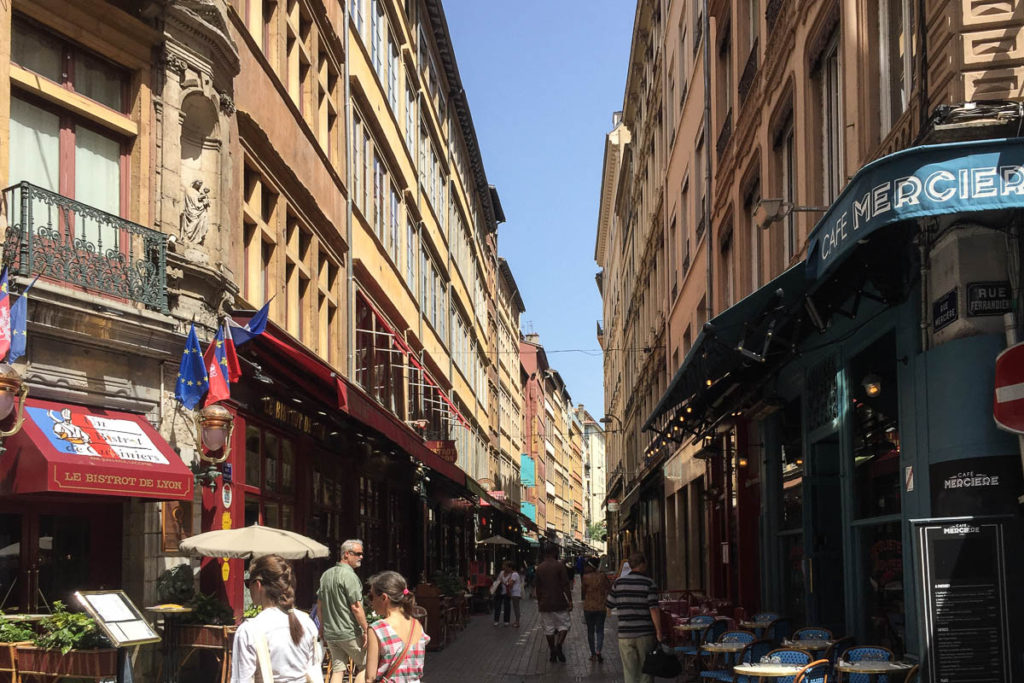
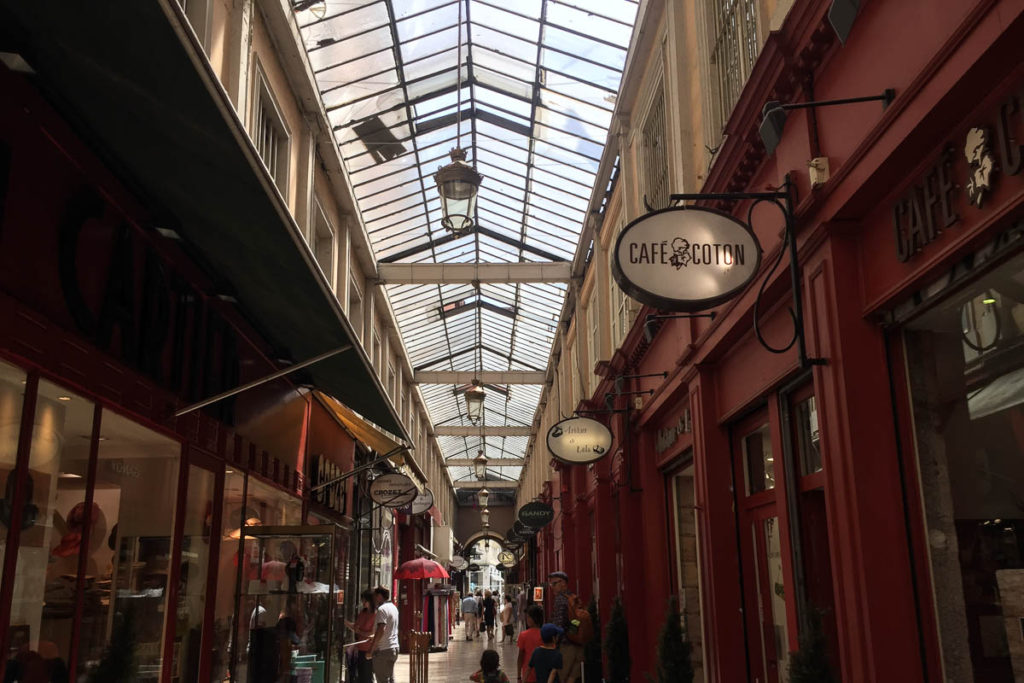
L’Atelier de Soierie
Ann had read about a silk workshop that welcomes visitors to observe their operation, so we stopped in at L’Atelier de Soierie. Here we got a fascinating education and demonstration of the shop’s silk printing and screen printing, all done by hand, using special paint. We even saw 100-year-old print blocks that are still in use. The shop also sold beautiful finished products. How special to see young people at work carrying on the trade by hand! An unfortunate side note: most of the workshop’s special pigments come from China, and the current trade war is having an impact.
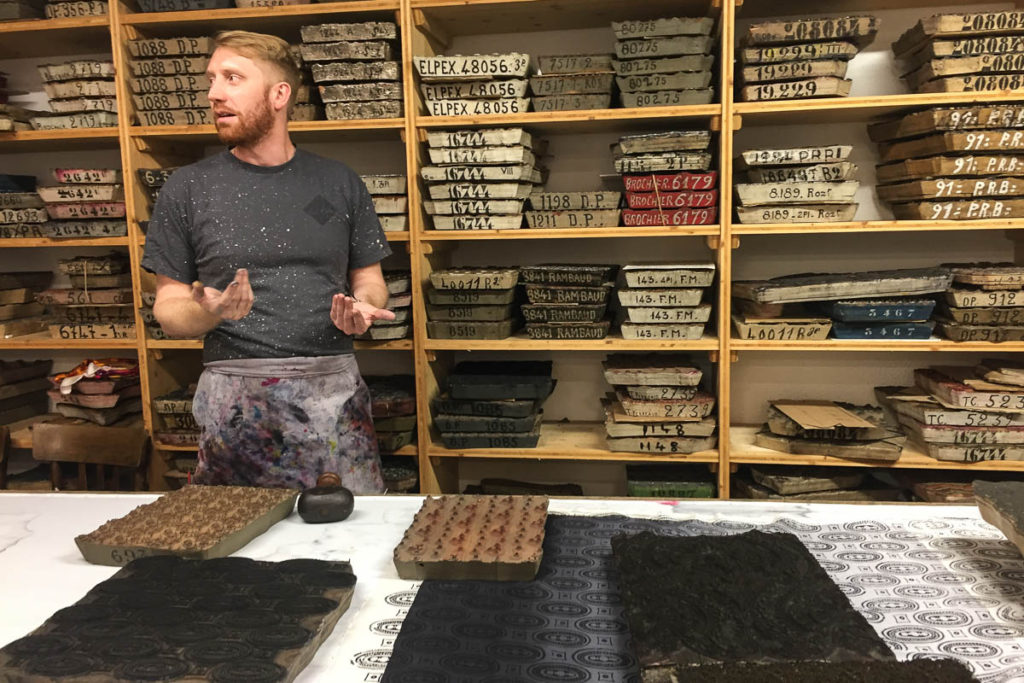
Croix-Rousse Neighborhood
Another day, we took the Metro to the somewhat artsy bohemian (and untouristy) Croix-Rousse neighborhood. We enjoyed seeing other parts of Lyon as we followed a route through local streets and mostly a series of many, many steps back down to Presqu’ile.
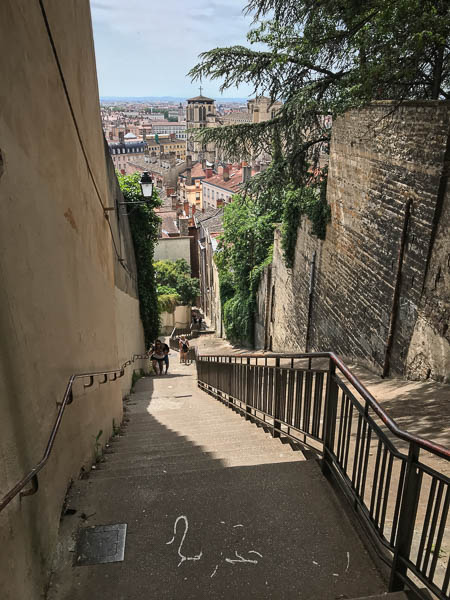
Musée des Beaux–Arts
As it was very hot outside, why not spend a few hours in an air-conditioned museum? Lyon’s Museum of Fine Arts was the perfect option. At the foot of the Croix-Rousse neighborhood is Place des Terreaux, Lyon’s huge square with the museum on one side and Lyon’s Hôtel de Ville on another. In addition to the museum and the City Hall, this square has a fountain sculpted by Bartholdi of Statue of Liberty fame, previously mentioned in our post about Colmar.
We spent several (cool) hours in the museum, which is located in a former abbey. The building itself is quite impressive, but the museum’s collection is even more so, both extensive and unusual. From sculptures of several centuries to Egyptian antiquities, to Ottoman plates and other pieces from the 13th to 20th centuries. Pottery and other pieces from 12th-14th century Iran, and of course all manner of French pieces, including furniture, across the centuries. Plus, Impressionist paintings and modern art. Just to name a few. Ian enjoyed the art, while Ann enjoyed everything about the museum.
As a side note, we’ve discovered after two years of travelling (don’t know why it took us so long), when we visit a museum, it’s better if we both set off at our own pace and meet up at the end.
Food in Lyon
Unfortunately, we ate out only twice during our stay here. It was too hot to enjoy since most restaurants didn’t have AC. So we don’t have a lot to report about the food in this gastronomic capital. But we can say that twice we had traditional Lyonnaise salads, both excellent! These salads were slight variations on a theme, though sticking to the basic ingredients of somewhat bitter greens, warm bacon pieces, croutons, poached egg, and Dijon vinaigrette dressing.
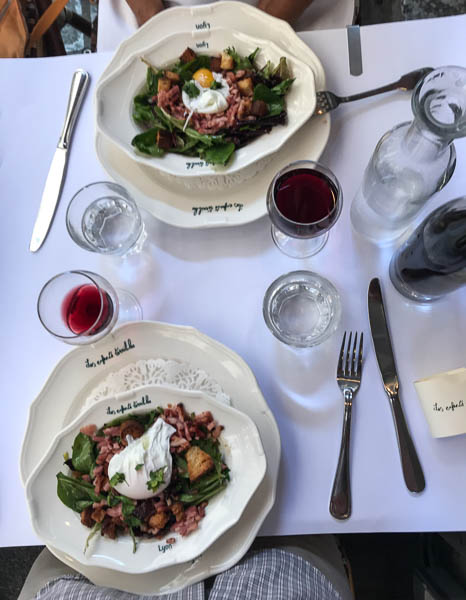
An Evening with Our Host
A special treat was an evening spent with our Airbnb host and his partner in their amazing apartment on the top floor of our building. Over drinks and an unusual assortment of yummy homemade appetizers, we spent a most pleasant few hours. We talked about our respective travels, both past and future. And quite a bit about politics! As we learned from reading a very informative book, The Bonjour Effect, about French culture, it’s perfectly acceptable to discuss politics with someone you just met. Just don’t ask them what they do for a living!
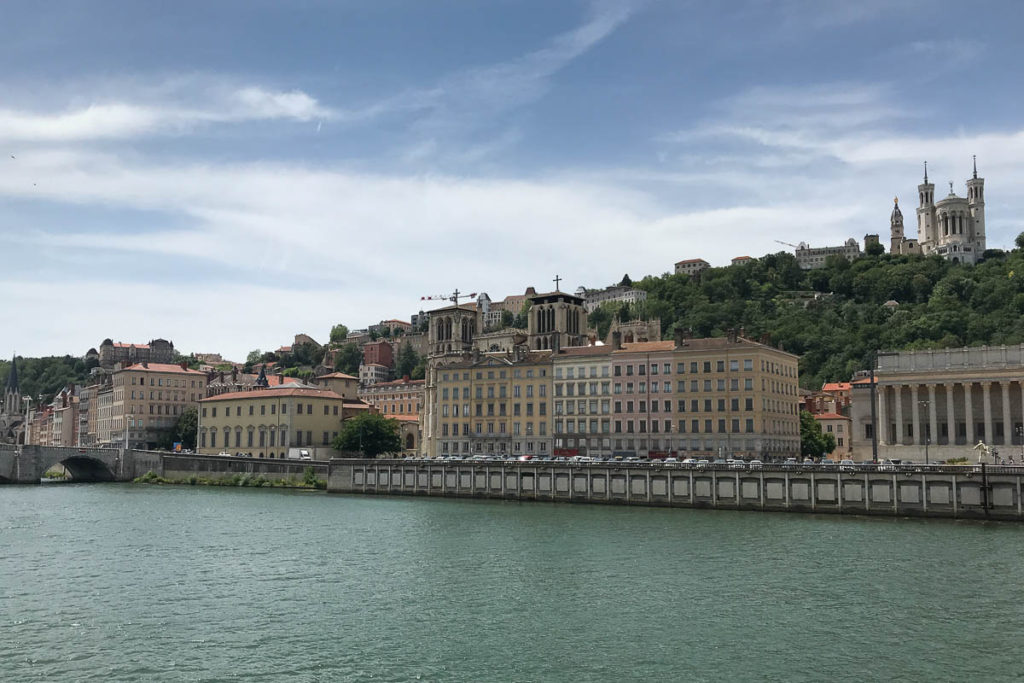
Lyon Wrap-Up
Although we enjoyed our time spent in Lyon and would have liked to stay a bit longer, it is just too big a city for us to consider as a potential longer-term location. We had planned to spend a week in Lyon, but with temperatures reaching over 100 degrees F and no air conditioning in our apartment, we left three days early.
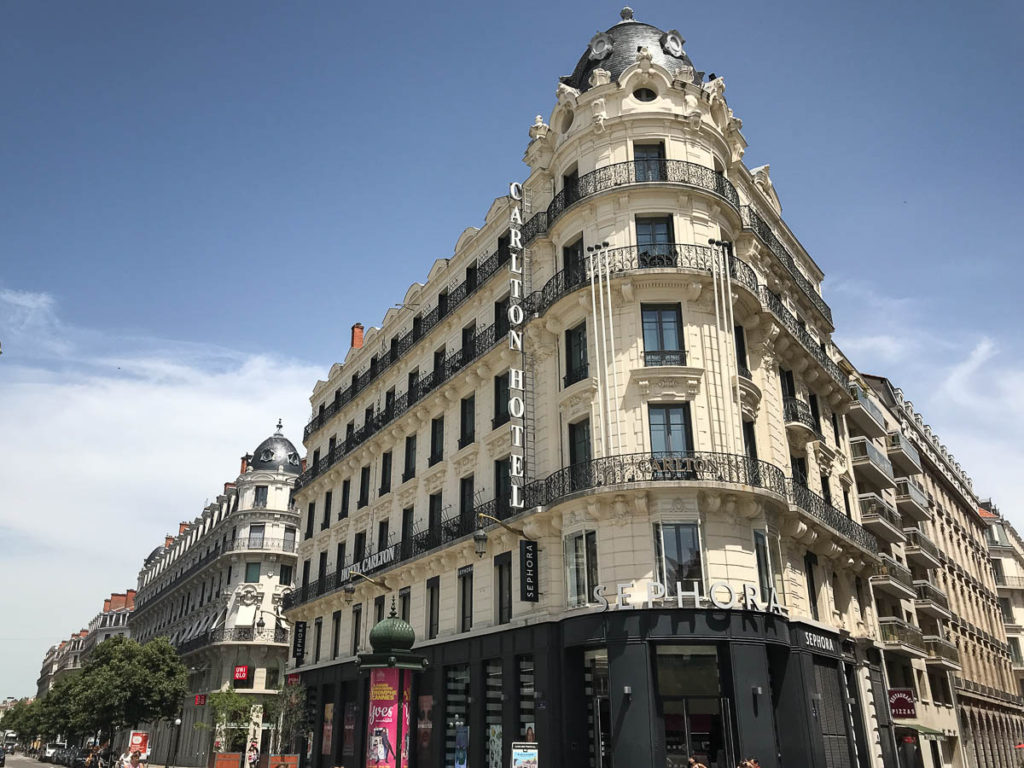
Our original plan was to visit Annecy and possibly Chamonix as day trips from Lyon. Even though both are at considerably higher elevation, the forecast was for high temperatures similar to Lyon. So reluctantly we choose to leave France early. As we packed on our last morning at 5:30 am, it was 90 degrees in our apartment and the Metro ride out to the airport tram was almost unbearable. Confirming our decision that we were right to leave. When we landed in Cluj, it was a wonderful 70 degrees.
We were able to extend our Airbnb in Cluj to arrive early, and our Airbnb host in Lyon had a very flexible cancellation policy. As the apartment in Cluj, Romania cost considerably less than the one in Lyon, France, and the fee to change our Wizz Air flight was minimal, we were able to make these changes with little or no additional cost to us.
Next up: Cluj-Napoca, Romania, including a visit to a salt mine
Ian and Ann

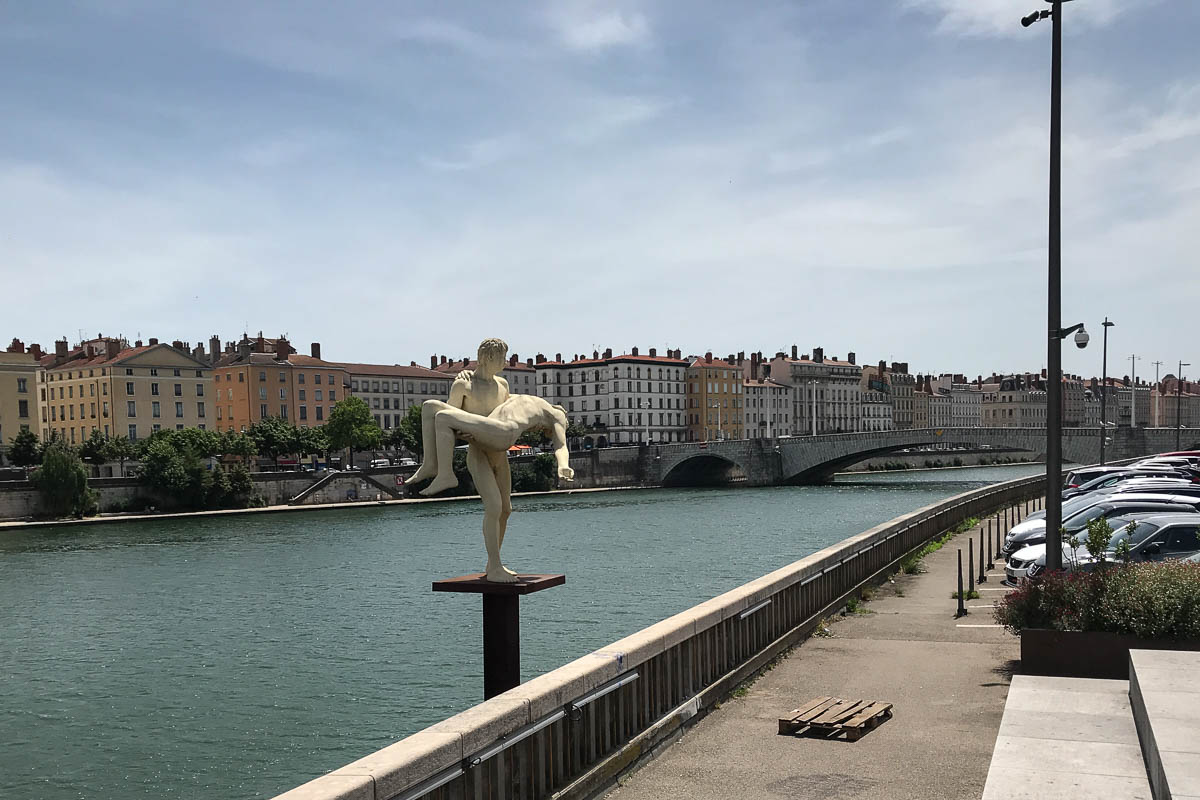
2 Comments
Thanks for the update……it’s been a while and very informative as usual. Happy travels….
Carrie
Thanks, Carrie! Apologies for the delay, we were “busy” chilling out in Brasov, Romania for six weeks.
Ian and Ann